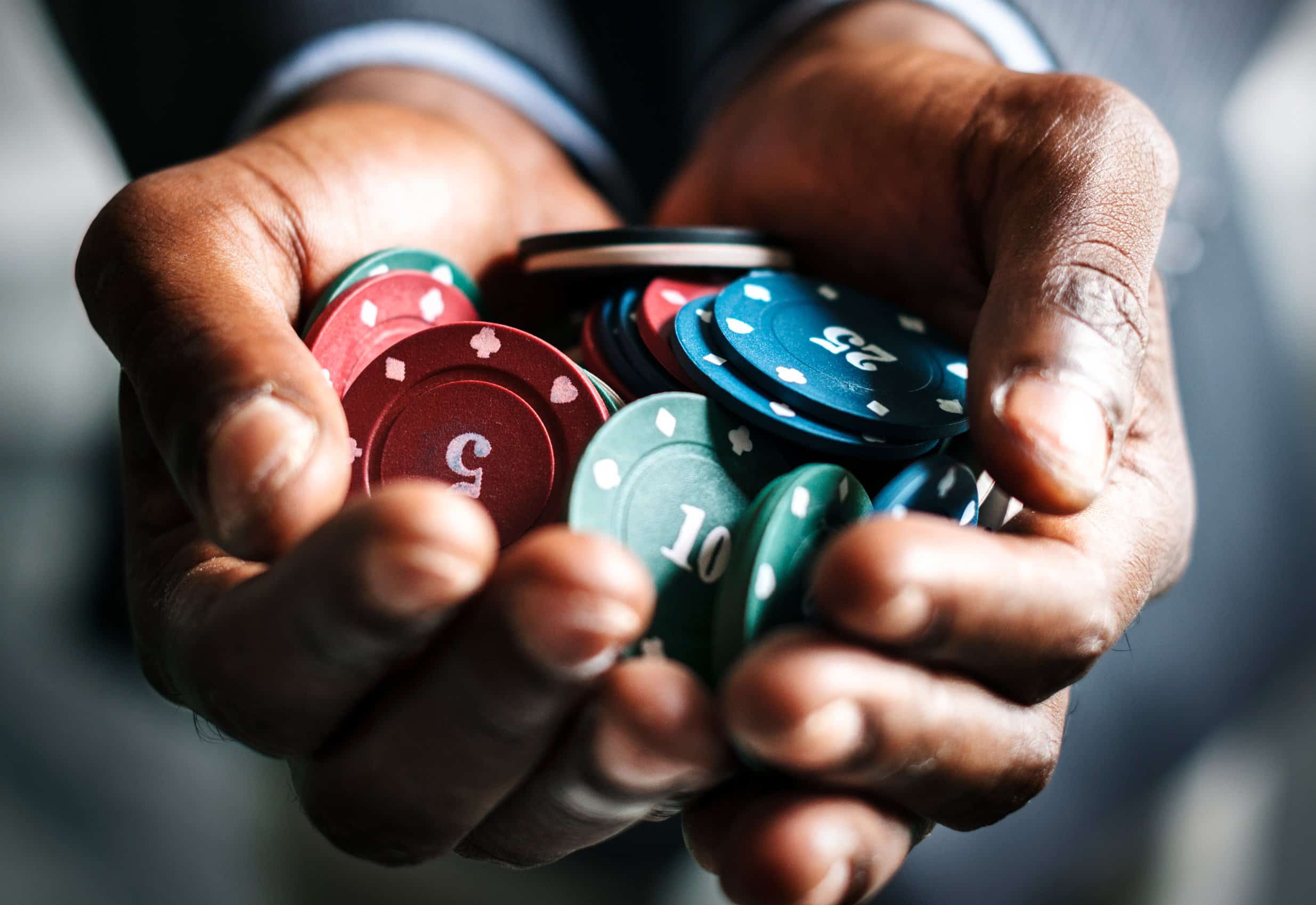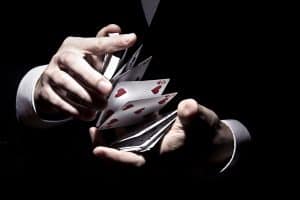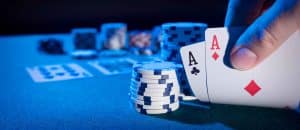It’s easy to see why Omaha is becoming more popular. It’s a fantastic game with tons of action and high-level strategy. There is also a strong resemblance to Texas Hold’em, which makes learning how to play Omaha simple for most players. Omaha’s big action makes the game incredibly exciting and infinitely more interesting to both beginners and professionals.
This article will cover the fundamentals of Omaha poker and show you how to play it.
The Fundamentals of Omaha Poker
If you understand Texas Hold’em Poker Rules, you should be able to play Omaha Poker as well. A full hand is played with four betting rounds, just like in Texas Hold’em. The first round of betting is preflop, the second round is after the flop (the first three community cards), starting with the player to the left of the button, and the third round is after the turn (the fourth of the community cards). The final round is after the river (the final community card).
Omaha is also available in a variety of variations. Pot Limit Omaha Hi, 5-card Omaha, 6-card Omaha, Fixed Limit Omaha, and Omaha Hi-Lo are the most common ways to play Omaha Poker. But, to make things easier, let’s start with the most basic Pot Limit Omaha Hi (also known as Pot Limit Omaha), in which all players are dealt four cards. Let’s get this party started!
How to Play Omaha Poker in 9 Simple Steps
#1 The distinctions between Hold’em and Omaha
In Omaha, each player is dealt four hole cards (as opposed to two in Hold’em).
You must use exactly two hole cards and three community cards to make your best poker hand. You can never use only one hole card.
#2 Winning a Hand
Omaha is a card game with two to ten players on a single table. You earn chips by winning a pot, and you can win a pot in two ways:
All of the other players fold their hands, leaving you as the sole remaining player in the pot. (This can be done before any community cards are dealt (preflop) or during any other betting round.)
You have the best hand in the game. Which means you get the entire pot. (A showdown occurs when all betting rounds have been completed and all community cards have been dealt.)
#3 Select a Dealer and Press the Dealer Button
You’re ready to play poker when you have 2-10 players at the table, each with a stack of chips. The first step is to draw the high card for the dealer. Deal one card face up to each player. The player with the highest ranked card (Aces are high) will receive the button and serve as the dealer for the game’s duration. If two players have the same high card, either deal them a second card or use the suits of their cards to determine who wins. (Poker suits are ordered alphabetically from worst to best: Clubs, Diamonds, Hearts, and Spades.) Next, give the dealer button (typically a white disk) to the player who has the dealer in their hand. This player must shuffle the deck and get ready to deal firsthand.
#4 Deal the Cards and Place the Blinds
The blinds must be placed by the two players to the left of the dealer before any cards are dealt in any hand. The player directly to the left of the dealer places the “small” blind and the player directly to the left of the small blind places the “big” blind. For example, the small blind is 0.05, and the big blind is 0.10.
The dealer can deal with the cards once the blinds have been set. Begin with the player to the dealer’s left (the small blind) and work your way around the table clockwise. Each player is dealt one card (face down) at a time until all players have exactly four cards.
#5 Begin the First Round of Betting
The first betting round, known as “preflop,” begins after the last card is dealt, and each player has four cards face down. The first betting round concludes when all players have had a chance to act, and all players who have not folded have bet the same amount of money in that particular betting round. When playing online poker, only one player can act at a time, beginning with the player to the left of the big blind. This player can choose between three options:
Fold: Can pay nothing into the pot, discard his or her hole cards, and return to the table for the next deal.
Call: You have the option of matching the big blind.
Raise: You can increase the bet by at least double the big blind. Depending on your betting style, a player may raise more.
#6 Carry on the Action Clockwise
The action in the preflop betting round moves clockwise around the table once the player to the left of the big blind acts. Each player has three choices: fold, call, or raise. The amount of a call or raise is always determined by the size of the last bet placed in that betting round. For example, the first player to call must match the size of the big blind. If they raise, the big blind must be doubled. If there is a raise, the next player must add the big blind plus the raise to call.
Pre-Flop, the Big Blind is the last to act. When the action returns to the small blind, he or she, like everyone else, can fold, call, or raise. For example, if a raise to 0.50 is made and the small blind has already paid 0.05, the caller only needs to add 0.45. If no raises have occurred and the current bet remains the same as the original big blind of 0.10, the big blind may check and continue. If they received a raise, they must add an amount less than the original 0.10. The preflop betting round is over once everyone has had a chance to act and everyone still holding a hand has wagered the same amount of money. The flop is the first three cards dealt.
#7 Deal the Flop and Begin the Next Round of Betting
The flop is dealt with after the preflop betting round is completed. In a community-card game like Omaha, there will be a total of five community cards for any hand that reaches a showdown. The flop is the first three cards dealt out of five. The dealer deals three cards face up in the middle of the table after discarding the top card of the deck face down (this is known as the burn card).
Following the flop, the player to the dealer’s left begins betting. Following the flop, the next betting round begins on the first player to the left of the dealer who still has a hand (players with a hand are known as “live players”). This player is in the same situation as the big blind before the flop. They have the option of checking or betting. The player is not required to add any money to call, nor are they required to fold. A bet in this round is usually the same size as the big blind.
The action shifts to the next live player to their left, who has the same options:
- Check (if there is no previous bet).
- Call (match a previous bet).
- Raise (add another bet on top).
#8 Deal the Turn and Continue Betting
After the flop betting round, the dealer deals the turn. The top card is discarded face down (another burn card), and one card is dealt face up next to the flop. Each new card is followed by a betting round. With one exception, the turn’s betting round is identical to the flop’s. The larger betting limit is now used for a single bet on the turn. The larger betting limit is usually double the size of the big blind. The large betting limit is sometimes slightly higher than double the big blind, mostly for convenience. This is most common in games like $2-$5 Limit.
#9 The River, the Last Bet, and the Showdown
The final community card is dealt with after completing the turn betting round. The dealer discards one final face-down card, followed by one face-up card. The final betting round of the hand begins when the river is dealt. The river’s betting round is identical to the turn in every way. The remaining live players enter the showdown when the river betting round is finished. The idea behind the showdown is straightforward: the player with the best hand wins the pot. For additional information on how to play Omaha Poker, here is a video that will help you understand better.




